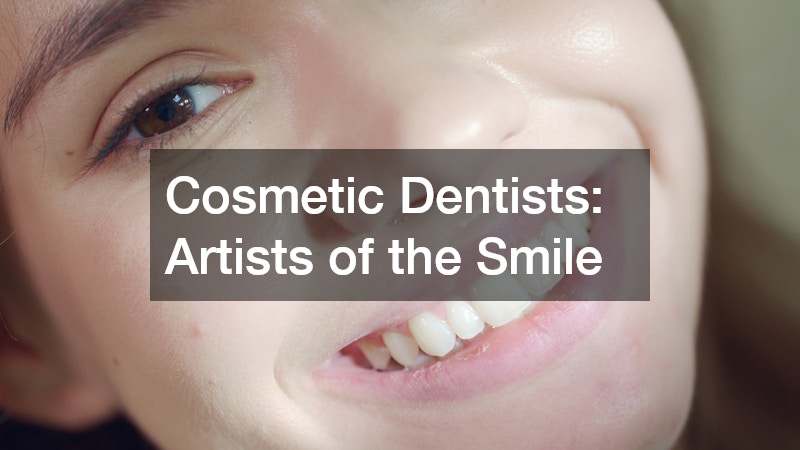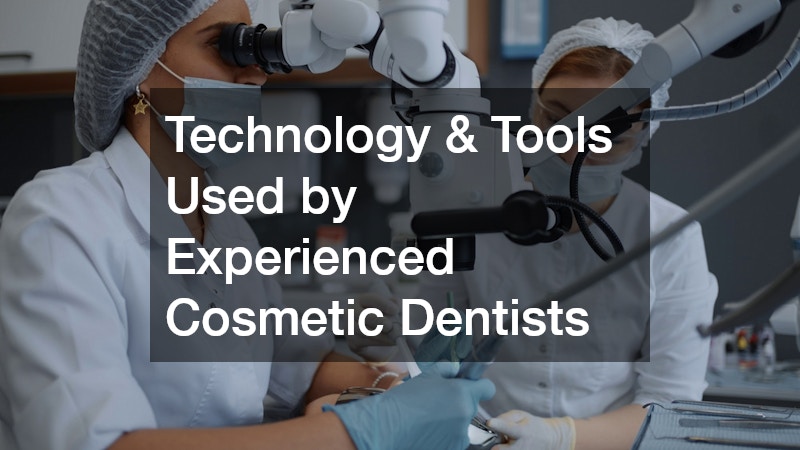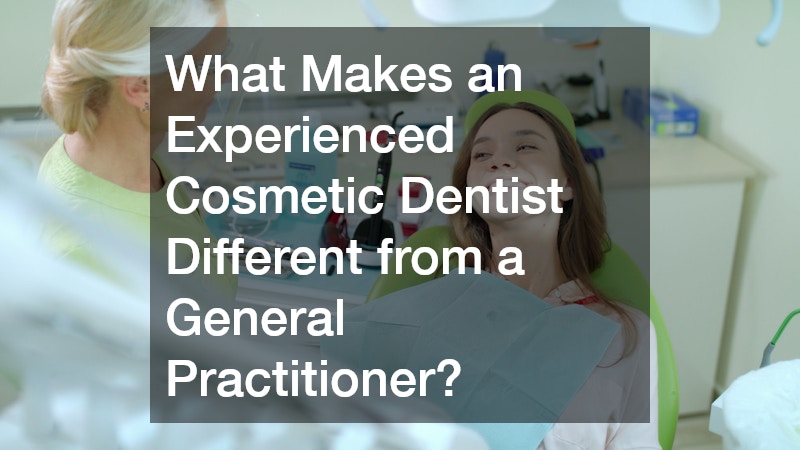
- General dentists focus on oral health maintenance, while experienced cosmetic dentists specialize in enhancing smile aesthetics using advanced tools and artistic techniques.
- Cosmetic dentists with experience undergo extensive post-graduate training, certifications (such as AACD accreditation), and continually refine their skills in smile design and facial harmony.
- State-of-the-art technology like Digital Smile Design, 3D imaging, and CAD/CAM systems are commonly used by experienced cosmetic dentists to ensure precision and patient satisfaction.
- Signature procedures such as porcelain veneers, gum contouring, and full smile makeovers are performed with a focus on natural aesthetics, which general practitioners may not offer or master.
- Artistic expertise matters: Seasoned cosmetic dentists understand proportions, color matching, and facial symmetry, creating results that are visually harmonious and lifelike.
- Patient-centered care is a hallmark of experienced cosmetic dentists, who provide thorough consultations, smile previews, and personalized treatment plans.
- Choosing the wrong provider can lead to poor aesthetic results, discomfort, and costly corrective work—highlighting the importance of verifying credentials, experience, and technology used.
Introduction: The Growing Demand for Aesthetic Dental Expertise
The field of cosmetic dentistry has seen explosive growth in the past decade, with 2025 on track to break previous records in elective dental procedures. According to the American Academy of Cosmetic Dentistry (AACD), over 85% of patients report being more conscious of their smiles today than they were just five years ago. Additionally, industry data reveals that the global cosmetic dentistry market is expected to reach $32 billion by 2026, highlighting a significant rise in demand.
But what’s driving this growth?
-
An increased focus on personal appearance and self-confidence
-
The rise of social media and Zoom culture
-
Accessibility to advanced cosmetic dental technology
As more people explore smile enhancement options, the importance of choosing a cosmetic dentist with experience becomes increasingly clear. While many general dentists offer basic aesthetic services, only a seasoned cosmetic professional can deliver truly customized, natural-looking results. Patients now understand that expertise, artistry, and advanced training matter when it comes to transforming their smiles.
This article will explore the key distinctions that set experienced cosmetic dentists apart from general practitioners—offering real-world insights for patients considering elective dental procedures.
1. Defining the Roles: Cosmetic Dentist vs. General Dentist
To understand the differences, we must first define what each practitioner focuses on.
General Dentists: Guardians of Oral Health
General dentists are essential to maintaining everyday oral health. Their services are crucial for diagnosing and treating issues before they become serious problems. Their focus areas include:
- Preventive care like routine cleanings and fluoride treatments
- Restorative procedures such as fillings, root canals, and crowns
- Oral hygiene education
- X-rays and diagnostic assessments
General dentists are the first line of defense against decay and disease, and they play an essential role in dental health.
Cosmetic Dentists: Artists of the Smile

While cosmetic dentists are trained in general dentistry, their real skill lies in smile design and enhancement. These dentists specialize in procedures that elevate appearance, symmetry, and overall facial aesthetics. Key procedures include:
- Porcelain veneers
- Smile makeovers
- Invisalign and clear aligners
- Gum contouring
- Teeth whitening and bonding
An experienced cosmetic dentist evaluates not only the teeth but also the lips, gums, skin tone, and facial structure to ensure the smile complements the patient’s overall appearance.
Example in Practice
A general dentist repairing a chipped tooth may use standard composite material to restore its structure. In contrast, a cosmetic dentist will assess color, translucency, and harmony with surrounding teeth before designing a restoration that enhances the entire smile.
Want to learn more about choosing the right expert for your dental goals? Visit DentistDentists.com.
2. Qualifications and Advanced Training That Set Cosmetic Dentists Apart
Unlike general dentistry, cosmetic dentistry requires continuous education and hands-on artistic development.
Specialized Education Beyond Dental School
Cosmetic dentistry is not a recognized dental specialty by the American Dental Association (ADA). However, experienced cosmetic dentists pursue rigorous training to master the nuances of smile aesthetics. Some go through:
- Accreditation with the American Academy of Cosmetic Dentistry (AACD)
- Postgraduate coursework in occlusion, smile design, and dental photography
- Hands-on training at renowned institutions like:
- The Las Vegas Institute (LVI)
- NYU Aesthetic Advantage
- Kois Center
Certifications and Portfolio Development
AACD accreditation requires extensive case documentation, written exams, and peer review. It demonstrates the dentist’s commitment to excellence and attention to aesthetic detail.
Mastery of Aesthetic Concepts
Experienced cosmetic dentists must understand concepts such as:
- Color theory and enamel shade-matching
- Facial analysis to align the smile with the patient’s natural features
- Micro-aesthetic techniques to replicate enamel texture and light reflection
The difference between a dentist who attended a weekend course in whitening and one who has years of study in smile design is vast. Investing in a dentist with proper credentials ensures you’re receiving care backed by proven methods and experience.
3. Technology & Tools Used by Experienced Cosmetic Dentists

Modern cosmetic dentistry relies heavily on technology that enhances accuracy and patient satisfaction.
Cutting-Edge Equipment You Should Expect
- Digital Smile Design (DSD): This software uses facial mapping to preview smile transformations, helping patients visualize the outcome before any work is done.
- CAD/CAM Technology: Enables same-day creation of crowns, veneers, and inlays with pinpoint accuracy.
- Laser Dentistry: Minimally invasive and precise, lasers are used for gum reshaping, whitening, and soft-tissue work.
- Intraoral Scanners: Replaces uncomfortable impressions with digital modeling, improving comfort and accuracy.
- 3D Cone Beam Imaging: Offers detailed analysis of jaw and bone structure—ideal for planning veneers and implants.
Benefits of Advanced Technology
- Less chair time for the patient
- Improved comfort and reduced anxiety
- Real-time adjustments and previews
- Greater control for the dentist and better outcomes for the patient
These tools help bridge the gap between patient expectations and final results. Without them, even the most skilled dentist may fall short of aesthetic excellence.
4. Key Procedures Only a Skilled Cosmetic Dentist Offers
Experienced cosmetic dentists perform complex, artistic procedures that general dentists usually do not.
Signature Cosmetic Procedures
- Porcelain Veneers: Ultra-thin shells that improve tooth shape, size, and color.
- Smile Makeovers: Tailored treatment plans combining multiple cosmetic services.
- Dental Bonding: Used to fix chips, cracks, or gaps with composite resin.
- Gum Contouring: Lasers sculpt the gum line to improve tooth proportions.
- Tooth Contouring & Enamel Shaping: Smoothing and reshaping enamel for balance and harmony.
Why Experience Matters
- Material layering to create natural translucency
- Sculpting teeth to complement facial features
- Avoiding over-treatment or unnecessary tooth reduction
These treatments are not just technical—they’re aesthetic and require hands-on mastery to get right. One mistake can result in a smile that looks fake or even requires correction later.
5. The Artistic Element: Why Experience Matters in Cosmetic Dentistry
Cosmetic dentistry isn’t simply clinical—it’s visual design backed by science.
Artistry in Action
Experienced cosmetic dentists are like architects. They plan and craft your smile to fit your personality and facial aesthetics. Artistic qualities include:
- Color Matching: Creating restorations that match the unique shade and hue of your natural enamel.
- Symmetry and Balance: Using dental golden ratios to create visually pleasing results.
- Micro-Aesthetics: Mimicking enamel texture, light diffusion, and translucency.
Real-Life Example
An inexperienced dentist may apply veneers that are too white or bulky. A cosmetic expert, however, will produce subtle, natural-looking results that blend in perfectly with adjacent teeth.
Use of Photography and Mock-Ups
Many cosmetic dentists photograph each step of their work. This habit improves treatment quality and allows for digital previews, giving patients greater confidence in the final result.
6. Patient-Centered Care: Expectations, Consultations, and Results
Experienced cosmetic dentists understand the emotional journey behind a smile transformation.
In-Depth Consultations
- Digital imaging to preview smile options
- Shade matching with visual guides
- Discussion about lifestyle, goals, and concerns
Holistic Smile Planning
Beyond just teeth, these professionals consider facial features, speech patterns, and even your personality when designing a treatment plan.
Emotional and Psychological Benefits
Many patients report improved self-esteem, better social engagement, and more confidence at work after undergoing cosmetic treatments.
Ongoing Support
- Long-term monitoring
- Follow-up appointments
- Personalized maintenance plans
7. Red Flags: What Happens When You Choose the Wrong Provider
Not all dentists who offer cosmetic procedures are truly experienced.
Common Mistakes and Their Consequences
- Veneers that appear too white or do not match surrounding teeth
- Improper bonding that leads to discoloration or chipping
- Gum damage from aggressive contouring
- Bite misalignment due to poor planning
The Cost of Revision Work
Correcting botched procedures is often more expensive than doing it right the first time. Patients may require full replacements, tissue repair, or orthodontic corrections.
How to Find the Right Cosmetic Dentist
- Check for AACD accreditation or other advanced credentials
- Ask for before-and-after portfolios
- Read verified patient testimonials
- Inquire about technology used in diagnosis and planning
Conclusion: Choosing the Right Professional for a Life-Changing Smile
An experienced cosmetic dentist is far more than a routine care provider—they are an artist, engineer, and visionary. Their ability to blend function with beauty transforms not only your smile but your self-image and daily interactions. While a general practitioner plays a vital role in preserving oral health, it is the cosmetic dentist who elevates your appearance, often restoring confidence that has been lost for years.
What truly sets these experts apart is their:
-
Commitment to continual education and skill refinement
-
Use of the latest, high-precision technology
-
Deep understanding of facial aesthetics and smile harmony
-
Personalized approach to each patient’s unique goals and challenges
When you choose a seasoned cosmetic dentist, you are investing in a tailored experience designed to bring out your best features. You’re not just fixing teeth—you’re crafting an identity. This is why it’s essential to do your research, ask the right questions, and review credentials, certifications, and portfolios.
Take the time to consult with a trusted expert. Ask about their philosophy on aesthetics, how they approach design, and how they ensure long-lasting results. Ultimately, the right provider will not only meet your expectations but exceed them.
References & Sources
- American Academy of Cosmetic Dentistry (AACD)
- https://www.aacd.com/
- MarketWatch Report
- https://www.marketwatch.com/
- Las Vegas Institute for Advanced Dental Studies (LVI Global)
- https://www.lviglobal.com/
- Kois Center – Advancing Dentistry Through Science
- https://www.koiscenter.com/
- NYU Aesthetic Advantage Program
- https://www.aestheticadvantage.com/

